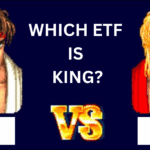Disclaimer: The following is for informational purposes only and not financial advice. Always do your own due diligence. I am not a licensed advisor.
BTGD Stock and ETF: A New Way to Hold Bitcoin and Gold Together
Imagine standing at the crossroads of two powerful forces: Bitcoin’s digital revolution and gold’s timeless store of value. For years, investors have argued over which one is the ultimate hedge. Some follow Bitcoin maximalists, such as Michael Saylor, while others side with gold advocates like Peter Schiff. But what if you didn’t have to choose at all?
That’s the idea behind BTGD — an exchange-traded fund (ETF) that combines 100% exposure to Bitcoin and 100% exposure to gold in a single investment. Instead of splitting your money between the two assets, you can own both with one decision. For investors seeking growth, diversification, and long-term inflation protection, BTGD has quickly become a fascinating option.
What Is BTGD?
Launched in October 2024 by Quantify Funds, BTGD (Bitcoin + Gold ETF) is the first ETF of its kind. For every dollar invested, you gain:
- $1 exposure to Bitcoin
- $1 exposure to gold
This makes BTGD essentially a 2x basket of a 50/50 portfolio, but structured in a way that is designed for long-term holding. Unlike traditional leveraged ETFs, which require daily trading, BTGD utilizes futures contracts and active rebalancing to maintain its balance without rapid decay.
The expense ratio sits at 0.99%, a typical cost for a specialized ETF offering unique exposure.

Why Bitcoin and Gold Belong Together
At first glance, Bitcoin and gold look like opposites. Bitcoin is digital, volatile, and new, while gold is physical, stable, and ancient. Yet both share an important trait: scarcity.
- Gold has a limited supply, with mining adding only about 1.7% new supply per year.
- Bitcoin has a hard cap of 21 million coins, with its annual supply growth now below 1% after the latest halving.
Both assets have become popular as inflation hedges and currency debasement protectors. Gold has long been trusted during crises, while Bitcoin is increasingly being adopted by institutions and governments as an alternative asset.
By stacking the two in one ETF, BTGD lets investors benefit from both sides: Bitcoin’s explosive upside and gold’s defensive stability.
How BTGD Works
BTGD achieves its structure through futures contracts. Instead of directly holding physical gold or Bitcoin, it uses derivatives to simulate exposure. This is what allows the ETF to provide 100% to both assets at once.
Rebalancing happens when the portfolio drifts more than 5% from its target. For example, if Bitcoin rallies sharply, the ETF trims exposure and reallocates to gold, keeping the portfolio balanced. This dynamic rebalancing has been one of the keys to BTGD’s strong performance.
BTGD Performance Since Launch
Since launching in October 2024, BTGD has outperformed both Bitcoin and gold individually.
- Bitcoin: +70%
- Gold: +20%
- BTGD: +90%
This outperformance is partly due to compounding effects from the dual exposure and active rebalancing. In practice, BTGD has tracked closer to Bitcoin’s movements but with the added buffer of gold during sharp drawdowns. For instance, when Bitcoin faced a 15% decline earlier in 2025, gold held steady, helping BTGD stay more resilient than a Bitcoin-only ETF.

Benefits of Investing in BTGD
- Diversification without trade-offs – Instead of choosing Bitcoin or gold, you get exposure to both.
- Cost-effective leverage – Futures contracts provide dual exposure at a lower cost than margin borrowing.
- Automatic rebalancing – Removes the stress of deciding when to trim Bitcoin or add gold.
- Inflation and currency hedge – Protects against fiat debasement by holding two scarcity-driven assets.
- Portfolio enhancement – When added to a traditional three-ETF portfolio (broad market, dividend, growth), BTGD boosts returns and reduces reliance on equities.
Risks to Consider
Every ETF carries risks, and BTGD is no exception:
- Volatility – With Bitcoin as a core component, swings of 10–15% are possible.
- Leverage risk – Futures-based leverage amplifies gains and losses.
- Jurisdiction concerns – Some of the ETF structure involves Cayman Islands subsidiaries, which adds legal risk.
- New product risk – At less than one year old, BTGD doesn’t yet have a long track record.
Investors should carefully assess their risk tolerance before allocating funds.

Who Should Consider BTGD?
BTGD is not for the ultra-conservative investor. Instead, it’s better suited for:
- Growth investors seeking high upside.
- Diversifiers who want alternatives beyond stocks and bonds.
- Bitcoin holders looking to add gold without reducing crypto exposure.
- Gold investors who want Bitcoin’s growth potential without abandoning stability.
Financial experts often recommend allocating 5–10% to gold and 1–5% to Bitcoin. BTGD makes it easier to achieve both targets in a single trade.
Dollar-Cost Averaging: A Smart Approach
Because BTGD is volatile, lump-sum investing can be risky. A better approach is dollar-cost averaging (DCA) — spreading purchases over weeks or months.
For example, instead of investing $5,000 all at once, you could invest $625 weekly over eight weeks. This smooths out entry points and reduces the chance of buying at a peak.

BTGD vs Holding Bitcoin and Gold Separately
Some investors ask: “Why not just buy a Bitcoin ETF and a gold ETF separately?”
The difference lies in management and efficiency. Holding IBIT (Bitcoin ETF) and GLDM (gold ETF) requires you to rebalance manually. If Bitcoin surges, you’d need to trim and reallocate to gold yourself.
BTGD does this for you automatically. It’s essentially institutional-quality portfolio management in a single ticker.

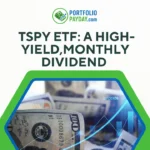

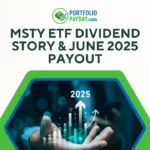
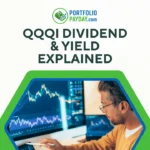

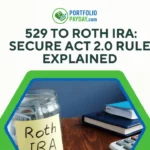


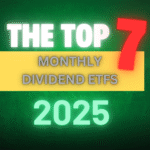

![Is SCHD Dead Weight — Or the Ultimate Dividend Machine? [2025 Guide]](https://portfoliopayday.com/wp-content/uploads/2025/08/SCHD-Thumbnail-150x150.png)
